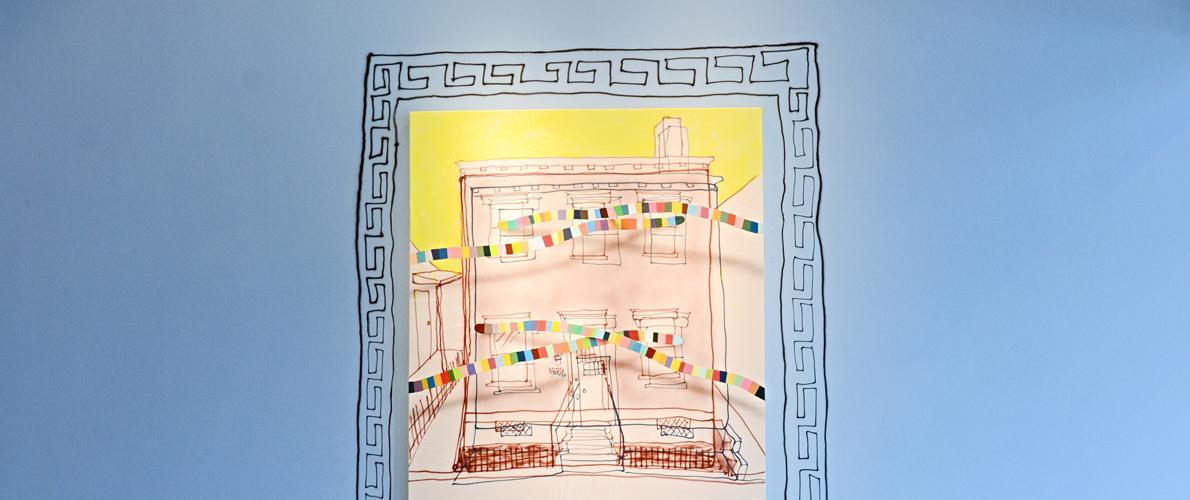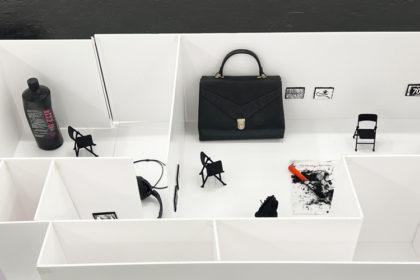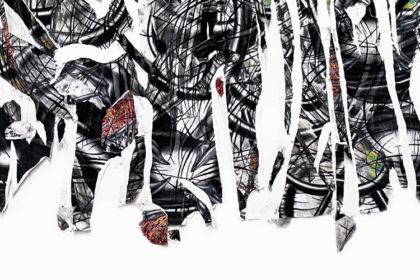Benjamin Cook is a painter and curator living in Covington, Kentucky. His work has been exhibited internationally and he has been published in numerous magazines. According to his biography, Benjamin’s work “combines abstract mark making with strategies of digital protocol to explore the space between the binaries of digital and physical space”.
‘History Abridged’ of Benjamin Cook was exhibited at Swanson Contemporary and can be called as a kind of screen art. There are, however, no monitors, televisions, or tablets in the gallery. Rather, Cook’s paintings and drawings—rendered on panel, canvas, or paper—at once allude to and imitate screens, stressing connections between physical and digital realms. More specifically, ‘History Abridged’ contains an assortment of images that conjure the fleeting qualities of the Internet and the ways in which online engagement impacts experience, at times subconsciously.
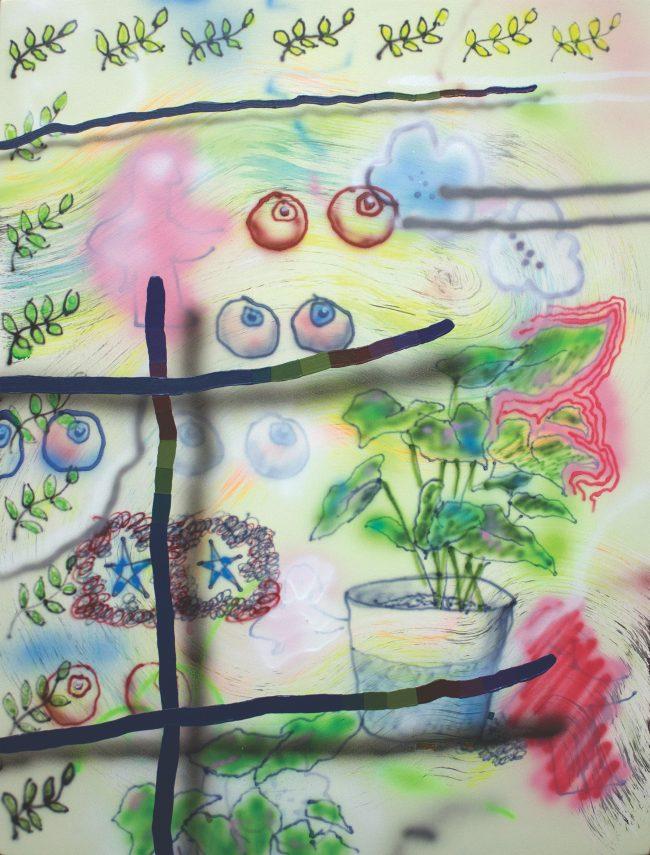
From “History Abridged” series, 2018.
Take for example any of the acrylic paintings arranged in a three-by-five grid of panels: each features airbrushed doodles of popular imagery ruptured by thin, multicolored streaks that seem to slowly creep across the surfaces, or in some cases link to themselves, notably as pretzel-shapes in Control the Weather (2018). Among the airbrushed components are items some viewers will recognize, such as a coffee mug, tic-tac-toe diagram, and skull. There are also other more precise—if not esoteric—denotations to pop culture that are, for some viewers, accessible only via digital devices, including Snoopy from the Peanuts cartoons, a Cincinnati Bengals football helmet, and a Bitcoin icon. The doodles overlap and intertwine, and are recorded in varying degrees of transparency—determining which are more present and grounded than others can be an arduous, and perhaps trivial, task. Paintings like Control the Weather are intent on describing the sensation of a constant convergence of tangible space and online activity as well as the vacuum of key parts from both spheres that such a convergence generates.

From “History Abridged” series, 2018, exhibition view, 2018.
The simulation of a digital experience is amplified by the multicolored streaks, an overt theme throughout History Abridged that provides a distancing filter over faux depictions of an ancient column and laurel leaves in Golden Platform (2018). Four streaks extend diagonally across the painting, and each are accompanied by shadows of themselves, lifting them from the rest of the image onto a plane all their own. Whereas Cook’s airbrush work is frequently blurred and executed using muted colors, his streaks offer a crisp, saturated, and palpable visual contrast, effectively establishing an obstacle between the viewer and familiar iconography. Within the exhibition, the streaks are a prominent indicator of the implicit screen and, arguably, a metaphor for it, as their shadows designate a heightened veneer under which all else occupies. Indeed, the streaks are crucial to this body of work, noted by Cook’s Composition series (2018), where the artist has isolated them using small pieces of felt instead of paint, exercising their applicability as critical tools.

From “History Abridged” series, 2018.
Cook’s paintings depict images that appear to be broken down into three planes that exist as layered spaces as well as layered stylized marks. The first (or bottom) being a relatively solid, squeegeed space, intended as a neutral ground for the placing the second and third layers. The second layer consists of airbrushed, sketchy images of, or referential to, pop culture as well as recognizable / stylized icons (football helmets, Snoopy, coffee mugs, skulls, plants, etc). The third layer consists of hard lined, multi colored snake like figures that seemingly sit inflexible on top of the viewing plane, with a subtle (wonderfully rendered) shading directly under the snake-like figure. This subtle shadow, though excellently rendered to create illusionistic depth, when read within a contemporary context, reads purely digital and allows the viewer curiosity as to what type of image they are looking at: the entire exhibition pushes the viewer to wonder what these works look like digitally (which I had seen in a digital format prior to the exhibition, and they do read differently). This is clearly intentional: to quote the artist, “As a single object, the paintings perform as highly polished illusions on digital screens and laborious flawed artifacts on the wall.
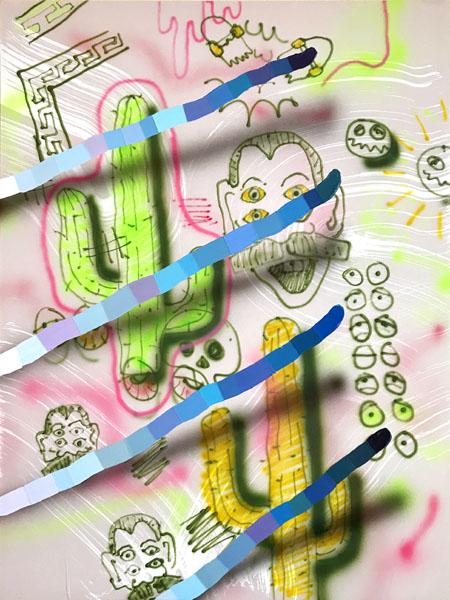
From “History Abridged” series, 2018.
To erode the divide between the physical and digital, Cook relies heavily on pop culture imagery and redundancy. Scattered in History Abridged are overt insinuations to global brands, politics, fictional characters, and everyday objects. Cook is hardly the first artist to invoke such material to address pressing issues; his practice holds connections to a multitude of artists, including Andy Warhol. Warhol repeats a singular image of figures like Jackie Kennedy or Marilyn Monroe onto a single canvas, yet, as Hal Foster argues in the eponymous chapter in Return of the Real (1996), “repetition is not reproduction…repetition serves to screen the real as traumatic,” the real being understood as artistic practice centered on corporeality and shared spaces. In Warhol’s work, imperfect registers, streaking, or dripping in his prints deny direct access to his subjects; instead, offering mediated contact, but still affecting viewers as if they had encountered the actual Kennedy or Monroe (as a traumatic instance, Foster maintains). Cook’s paintings and drawings function similarly. His reuse and repetition of certain emblems are not meant to be taken as replicas, instead the techniques he employs to portray and shade them—including airbrush and hard-lined painting—inspire sensations at which point digital behavior becomes lived experience.

From “History Abridged” series, 2018.
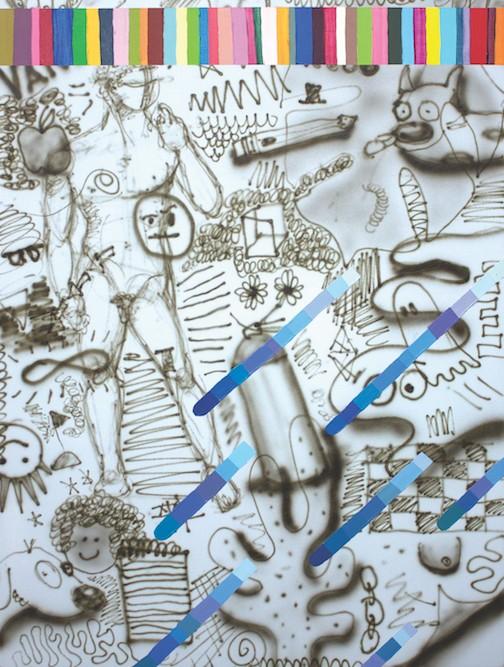
From “History Abridged” series, 2018.
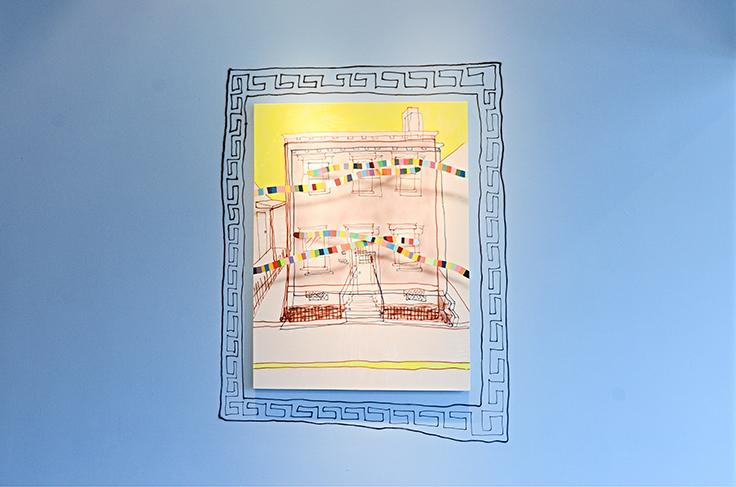
From “History Abridged” series, 2018.
In History Abridged, Cook challenges viewers’ perceptive abilities. On one hand, he tests how many elements of pop culture and daily life they may or may not recognize. On the other, he constructs the illusion of looking at screens, demonstrating the extent of his illusory skills with a pair of trompe l’oeil paintings of sketches on scratch paper. Cook is also interested in how history is perceived, and whether the impetus of history rests more in personal, bite-sized, sometimes mundane moments or in widespread narratives of grandeur heroics and epic downfalls.
Foster, Hal. “The Return of the Real.” In Return of the Real: The Avant-Garde at the End of the Century. Cambridge, MA and London, England: The MIT Press, 1996.
Victor Kuili

